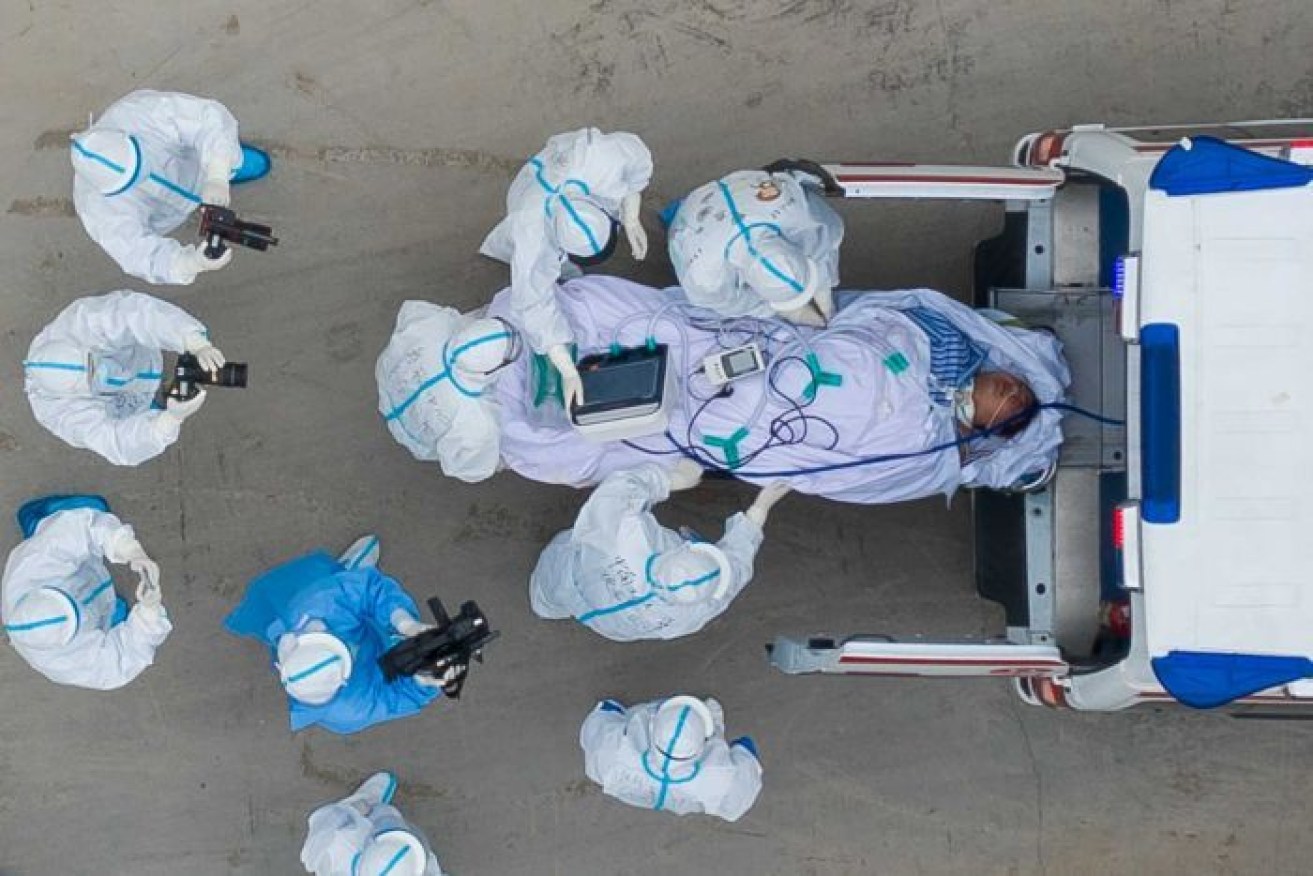From a dry cough to your final breath – experts explain how virus attacks your body
From a fever and a dry cough, to needing a ventilator, to no symptoms at all — the extremes of COVID-19 can be unpredictable.

Symptoms can start as a cough, but once inflammation sets in things can take a turn for the worse. (Photo: AAP: Costfoto/Sipa USA)
University of Sydney and Royal Prince Alfred Hospital associate professor of respiratory medicine Dr Greg Fox said experts were still learning a lot about the range of symptoms COVID-19 patients showed and how they progressed.
“It seems like there’s not one single way that patients present, and that’s why it’s been difficult,” Fox said.
First symptoms and mild cases
The incubation period for COVID-19 varies, but the WHO currently says it takes between one and 14 days from when a person is exposed to the virus to when they start to show symptoms.
There are reports suggesting this incubation period could be much longer, possibly up to 24 days.
The average amount of time before symptoms start to show is five days, according to the Australian Department of Health.
These include fever, tiredness and a dry cough, and some people also develop aches and pains, nasal congestion, a runny nose, a sore throat or diarrhea.
However, some people can show no symptoms at all but still have the virus.
While the data suggests most transmission takes place during the symptomatic phase, there are documented cases of people who are asymptomatic passing on the virus.
Virologist Dr Kirsty Short, from the University of Queensland, said during the early stages of COVID-19, the virus was binding to cells in the respiratory tract.
“It can basically hijack their cellular machinery,” she said.
“So instead of making your body’s proteins, they start making the proteins that constitute the virus.”
WHO data suggests 80 per cent of people who get COVID-19 do not progress beyond mild symptoms, and this group of people largely recovers without special treatment.
“[The majority of people] have fairly mild symptoms and may not even attend healthcare facilities, and … their symptoms are likely to resolve within 14 days,” Fox said.
“One of the challenges at the moment is that we’re still only able to assess the symptoms of people who’ve actually had a test, and there’s probably a lot of people who have never tested because they don’t feel unwell.”
The tipping point
In cases around the world, doctors are seeing a certain point after 10 days where some COVID-19 patients take a turn for the worse.
Short said that in the first days of infection, when a patient typically does not feel as bad, the virus was replicating while the body was fighting it.
“But what can happen in severe cases is in that second week of the illness, your immune response can become hyperactivated,” Short said.
Fox said the high-profile case of British Prime Minister Boris Johnson was an example of the progression some more severely affected patients follow.
“He had fairly mild symptoms initially, then after about 10 days he was taken to intensive care because he suddenly had an oxygen requirement,” he said.
“That is the time point, around 10 days, where patients can become unwell — we see that in our hospital too.
“It’s one of the reasons why even patients who are pretty well still need to be monitored closely, because they can suddenly, after about 10 days, get a lot sicker.”
When your immune response becomes the enemy
While the majority of people have mild COVID-19 symptoms and do not need to be hospitalised, overseas experience suggests around 20 per cent of people will need to be, and 5 per cent of those will be critically ill.
Most people’s immune response will help fight the virus.
But sometimes the immune response can start to get out of control.
“If you have too much inflammation, you get this cytokine storm, or this inflammatory response that essentially damages your lungs and causes more damage than the virus itself,” Short said.
“That creates a whole lot of problems for other organ systems, because all the organs in your body need access to oxygen. And ultimately what can happen, is the patient can be so short of oxygen they need oxygen supplied externally, and potentially to be put on a ventilator.”
While some risk factors for the immune system becoming “hyperactivated” are known, Short said experts could only speculate at the moment on why other patients ended up in a critical condition in hospital.
“Why one 30-year-old gets very severe disease and another 30-year-old gets very mild disease, we don’t know,” she said.
What is the prognosis for severe cases?
Short said the prognosis for more severe cases of COVID-19 depended on a variety of elements, including the treatment being received. Treatments that block inflammation are showing promise.
“Some of the options that are now being looked at, and they’re very promising, are treatments that can block components of that inflammatory response, and there’s some evidence now if they’re administered at the right time and at the right dose they can reduce disease severity,” she said.
“It also depends on a lot of other factors — so there’s things like if you end up being intubated, that comes with its own risks.”
Fox said mortality rates in people needing ICU admission varied a lot between studies.
Recovery and future health impacts
Fox said while it was early on in the COVID-19 pandemic and more research needed to be done to follow patients over time, most people would make a full recovery.
“There’s no suggestion from the patients that we’ve seen that there are any ongoing problems,” he said.
“A diagnosis of COVID really makes people very anxious.
For more severe cases, especially those who spend time in intensive care, recovery is likely to take longer — sometimes weeks or months for a patient to feel “normal”.
Toby Richards, a professor at the University of Western Australia and surgeon at Fiona Stanley Hospital, is working on one of the clinical trials to respond to COVID-19.
He said it was only through further studies that answers might start to become clear about why some people were more adversely affected.
“We saw this with SARS as well. Some people were fine, and some people became [seriously] unwell at very frightening rates,” he said.
“What determines whether or not someone just gets a bad cold, and what determines whether or not someone does really badly and ends up in intensive care?”
– ABC / Jessica Warriner

















